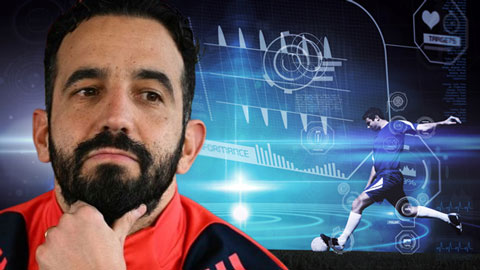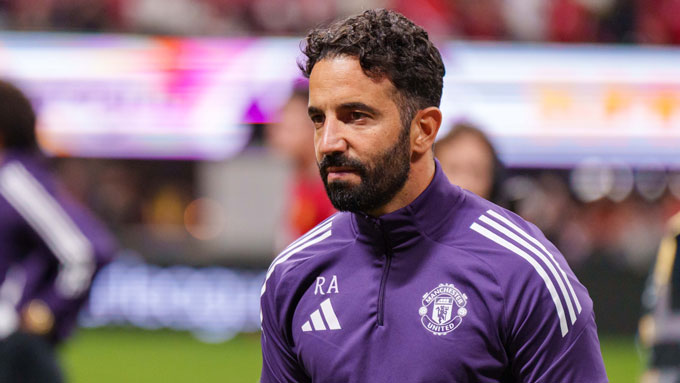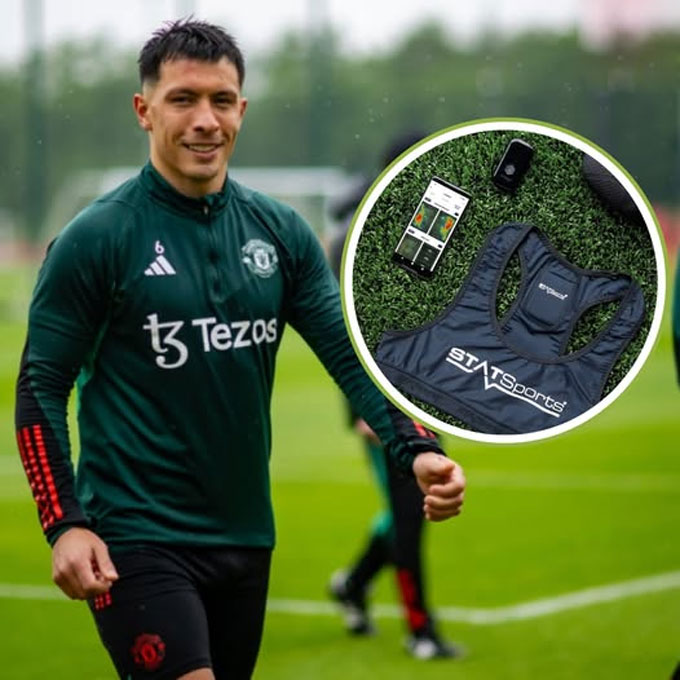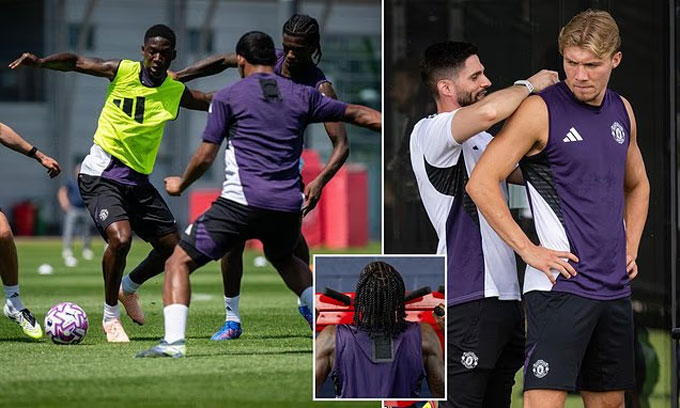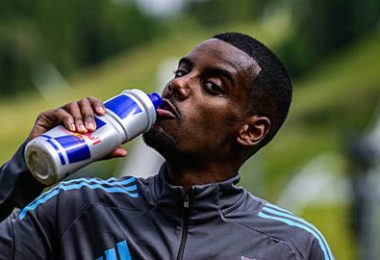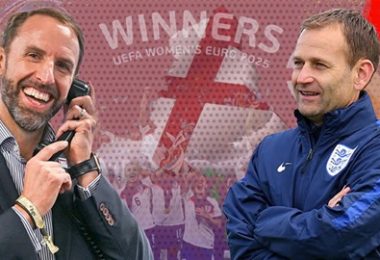The new technology will provide Ruben Amorim with the most updated tracking information ever, in the context that he warns that the MU players will be publicly competing.
There is no room for lazy
Ruben Amorim broadcast a very clear message this week: He will not use any Man United player who is lazy in training and ready to name their surname in front of the whole team.
“If you don't practice properly, I have a video to show you,” Man United's coach said. “And I will show it to everyone. I always follow the players. I expect a stage that I don't need to do, because they will promote each other. But if you practice badly once, I will show the image right then. I will not talk to you, I just speak frankly and show you everything.”
Of course, the same thing will be applied in official matches. What Man United fans have complained during the recent seasons is that the team refuses to run or refuses to play hard.
It is worth noting that Amorim publicly supported Bruno Fernandes, the captain has just criticized that the whole team was “lazy” when there was no ball in the 2-2 draw with Everton in Atlanta on Sunday.
Fernandes is currently leading the 6 new team of Man United, including Harry Maguire, Lisandro Martínez, Diogo Dalot, Noussair Mazraoui and Tom Heaton. Such statements are what coach Amorim expects from this group, in an effort to keep the team in the framework.
Amorim's “tool”
Of course, Amorim will believe in his intuition and observation, but when he mentioned the “image” to show the player, he is talking about the new real -time tracking data system and upgraded, the tool helps him consolidate his assessments with specific data.
Anyone watching Man United matches in the US tour may have realized the players wearing the GPS APEX 2.0 data of Statsports, the most advanced performance monitoring device today.
This new technology provides the most detailed and updated information ever, with the system called “real-time kinematics” transmitted to Amorim and his 5 million absolute data points within 90 minutes. From there, they can immediately determine who is trying their best and who is not.
“Now you can make a decision on the player based on the immediate direct data, rather than wait until the training session ends and download the data down and say like: 'I wish Mason Mount ran a little more, or made a few more sprint phase or in fact he had gathered too much,”, Paul McKernan, the executive director of Statsports, explained.
During the tour in the US, Man United used mobile signal transceivers that came with Apex 2.0 device, but in Carrington, they invested from 6 to 8 fixed columns to cover 6 training grounds, along with 4 fixed columns at Old Trafford each tip of 2 columns were installed in the headlight system to set up only once.
GPS data from a small device mounted on the player's shirt will be constantly transmitted to these transceiver columns, then sent directly to the coaching staff and Amorim's analysts to help them evaluate immediately in the training session or match.
Reduce the risk of injury
During a training session in Chicago, Bruno Fernandes was caught supporting teammates Luke Shaw and Matheus CuHa adjusted the tracking devices on the shirt. That small action not only showed the role of the leader of Fernandes, but also emphasized another key benefit of APEX 2.0 technology, the ability to predict the risk of injury of the player.
The last full season under Erik Ten HAG (2023/24), Man United is one of the most affected teams due to the Premier League injury, calculated according to the rate of injuries every 1,000 minutes of competition. According to the statistics of the Premier Injuries, the team lost a total of 1,620 days of competition for 45 different injuries.
This is a key factor that makes coach Ruben Amorim, after taking power to replace Ten HAG in November, must apply the extremely cautious approach to the player's movement volume.
Injury is inevitable in the top sport, but the APEX 2.0 technology can help Amorim and its team track data in real time from which to recognize when the player starts entering the “red area”, the time the risk of trauma increases. This helps the coaching staff make timely adjustment decisions.
“They can directly monitor dynamic loads. This is an injury prediction index,” Paul McKernan, CEO of Statsports, explained. “Injury is something that can happen, but we may predict when the player starts entering the dangerous area.”
“Making decisions in real time is a lot easier if you have the exact data right before your eyes, instead of waiting until someone has torn thigh muscles before reviewing the data and saying: 'The price we know sooner'. It is at this point, the technology will really make a difference.”
“You can understand the load that a player can tolerate, and when they start to decline. It is indicated what is happening.
Ed Leng, Head of MU's physical performance, also has many expectations: “APEX 2.0 devices will help strengthen real -time monitoring, thereby improving the preparation, development and protection of players.”
Overall, this system helps Amorim to have a more comprehensive view in every moment of the student's degrees of movement, not only based on external loads (distance, speed), but also internal loads (body reactions, heart rate …).
“The total travel distance is only a very small part of the story,” McKernan added. “You need to analyze additional dynamic loads through indicators such as: accelerating, deceleration, the number of high -speed runs and combining all to make truly accurate evaluation of performance.”
“For example, Kobbie Mainoo when pressing and then have to rush back to defense at high speed. We can separate data into internal and peripheral groups, then analyze more moving distance, frequency and movement volume.”
In other words: No player can evade but at the same time, they will also be better protected from the risk of injury. That is what Ruben Amorim sets a goal this season.

